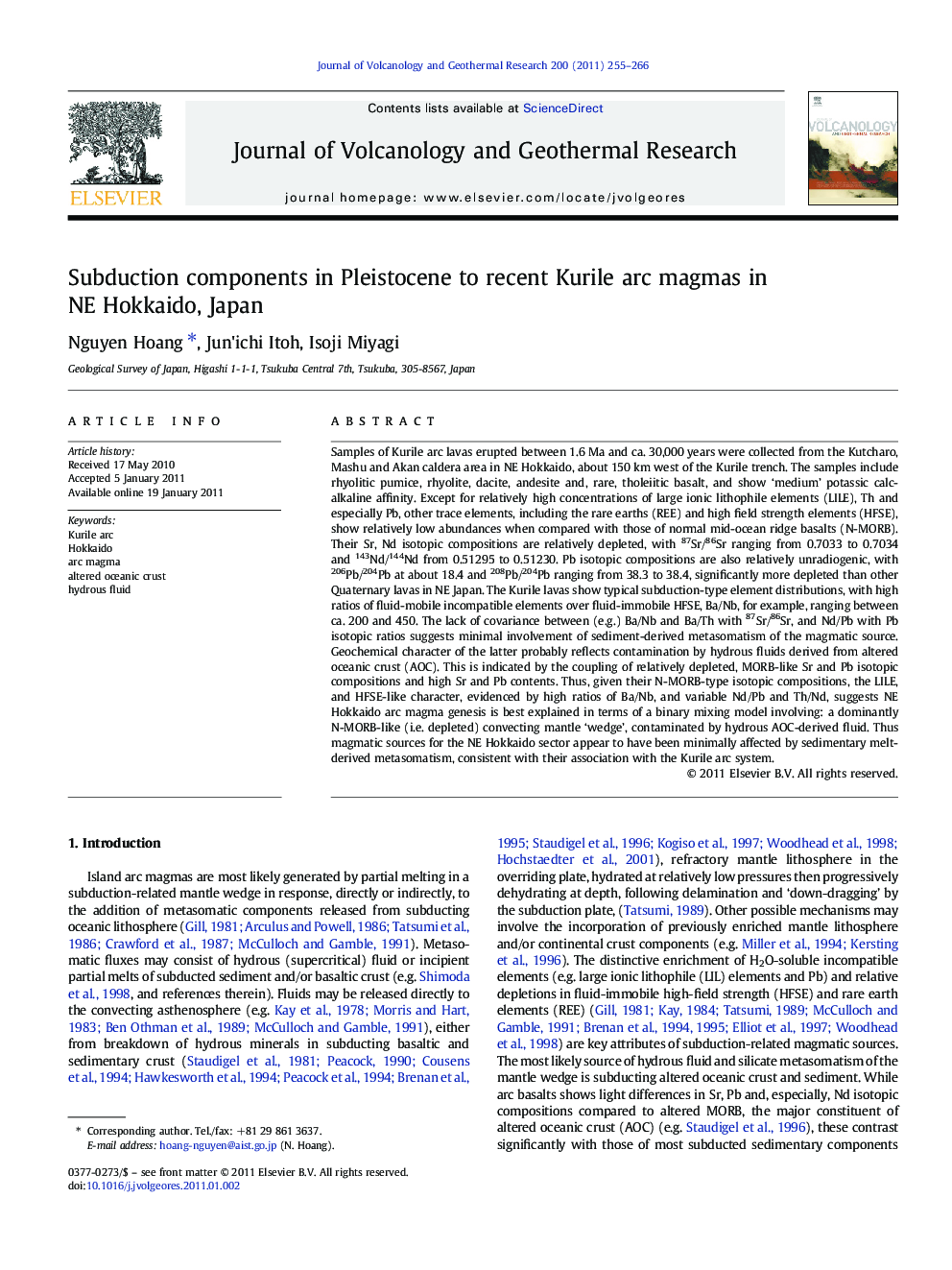| کد مقاله | کد نشریه | سال انتشار | مقاله انگلیسی | نسخه تمام متن |
|---|---|---|---|---|
| 4715105 | 1638407 | 2011 | 12 صفحه PDF | دانلود رایگان |

Samples of Kurile arc lavas erupted between 1.6 Ma and ca. 30,000 years were collected from the Kutcharo, Mashu and Akan caldera area in NE Hokkaido, about 150 km west of the Kurile trench. The samples include rhyolitic pumice, rhyolite, dacite, andesite and, rare, tholeiitic basalt, and show ‘medium’ potassic calc-alkaline affinity. Except for relatively high concentrations of large ionic lithophile elements (LILE), Th and especially Pb, other trace elements, including the rare earths (REE) and high field strength elements (HFSE), show relatively low abundances when compared with those of normal mid-ocean ridge basalts (N-MORB). Their Sr, Nd isotopic compositions are relatively depleted, with 87Sr/86Sr ranging from 0.7033 to 0.7034 and 143Nd/144Nd from 0.51295 to 0.51230. Pb isotopic compositions are also relatively unradiogenic, with 206Pb/204Pb at about 18.4 and 208Pb/204Pb ranging from 38.3 to 38.4, significantly more depleted than other Quaternary lavas in NE Japan. The Kurile lavas show typical subduction-type element distributions, with high ratios of fluid-mobile incompatible elements over fluid-immobile HFSE, Ba/Nb, for example, ranging between ca. 200 and 450. The lack of covariance between (e.g.) Ba/Nb and Ba/Th with 87Sr/86Sr, and Nd/Pb with Pb isotopic ratios suggests minimal involvement of sediment-derived metasomatism of the magmatic source. Geochemical character of the latter probably reflects contamination by hydrous fluids derived from altered oceanic crust (AOC). This is indicated by the coupling of relatively depleted, MORB-like Sr and Pb isotopic compositions and high Sr and Pb contents. Thus, given their N-MORB-type isotopic compositions, the LILE, and HFSE-like character, evidenced by high ratios of Ba/Nb, and variable Nd/Pb and Th/Nd, suggests NE Hokkaido arc magma genesis is best explained in terms of a binary mixing model involving: a dominantly N-MORB-like (i.e. depleted) convecting mantle ‘wedge’, contaminated by hydrous AOC-derived fluid. Thus magmatic sources for the NE Hokkaido sector appear to have been minimally affected by sedimentary melt-derived metasomatism, consistent with their association with the Kurile arc system.
Research Highlights
► NE Hokkaido arc lavas ranging from rhyolite to basalt are isotopically depleted.
► No covariance between fluid-mobile/ immobile element ratios and Sr isotopes.
► Coupling of depleted Sr and Pb isotopes, and high Sr and Pb contents.
► Little or no subducted sediment-derived melt or fluid involved in the magma source.
► Magma source is mantle wedge contaminated by altered basaltic crust-derived fluid.
Journal: Journal of Volcanology and Geothermal Research - Volume 200, Issues 3–4, March 2011, Pages 255–266